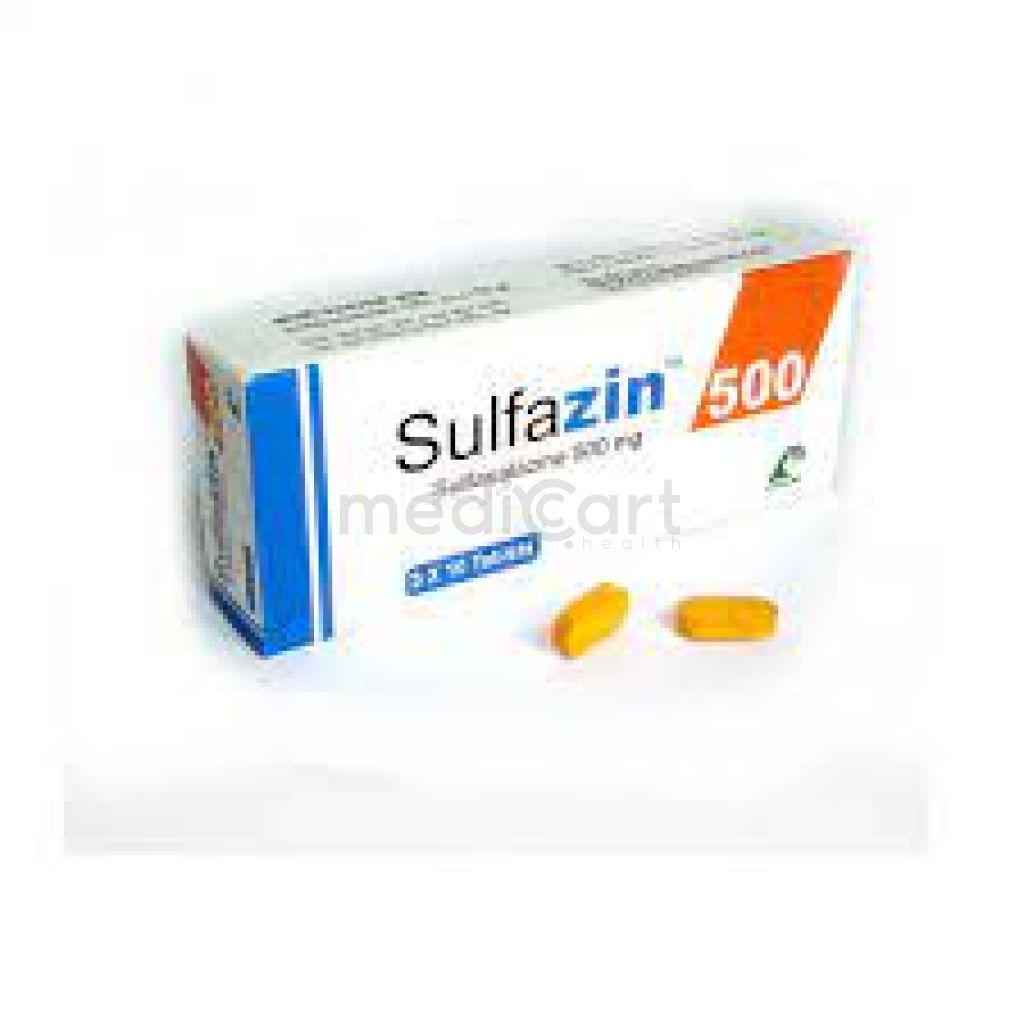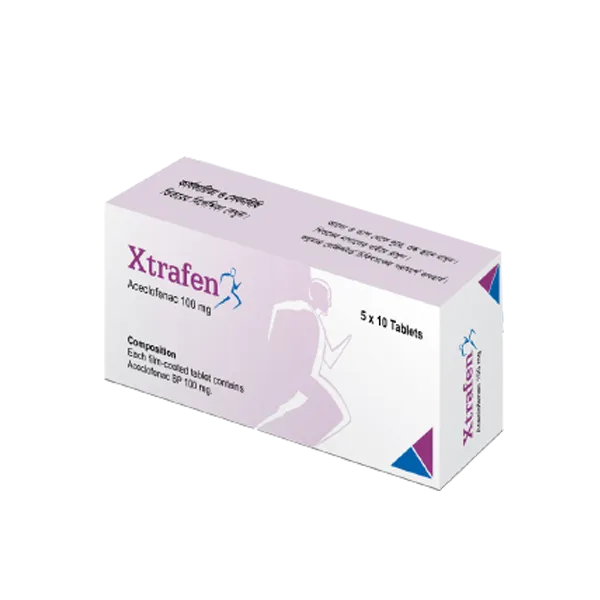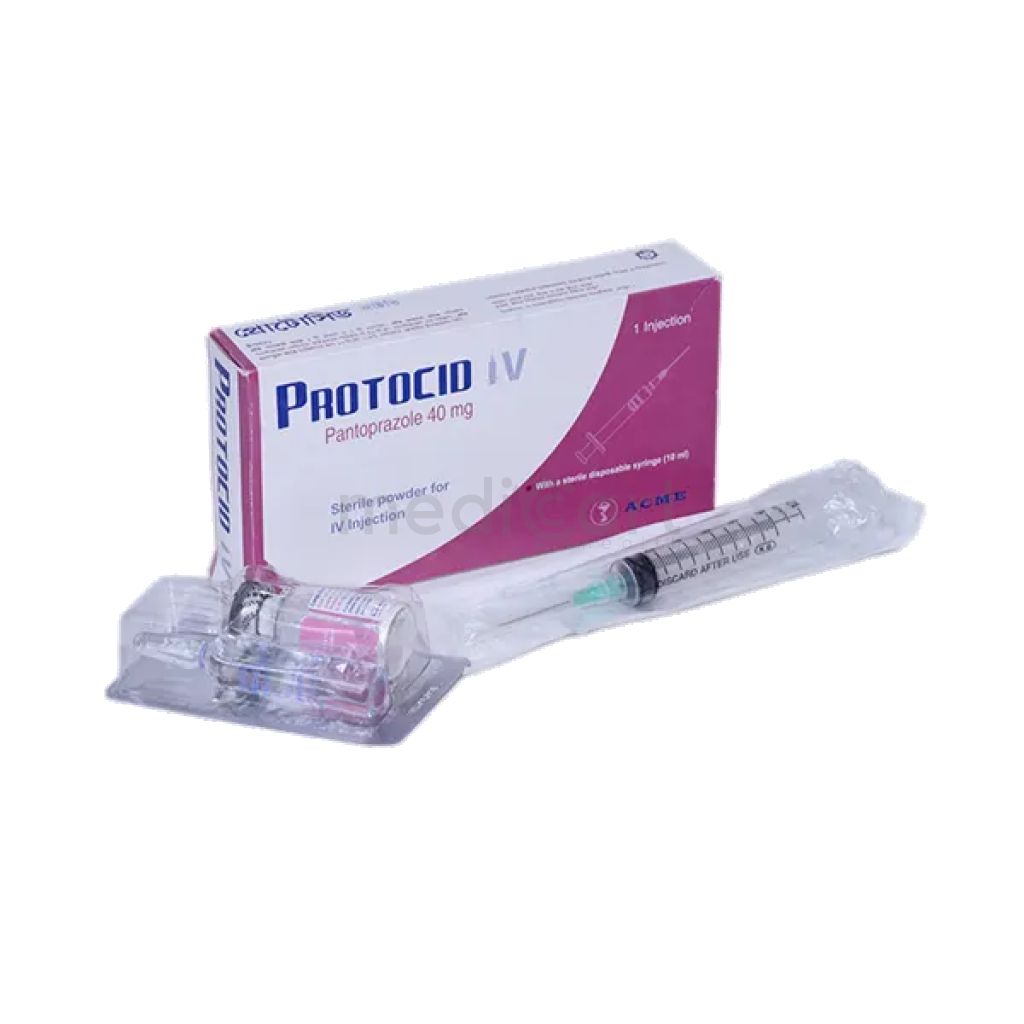

Sulfazin - 500mg
Tablet* Delivery will be done in Dhaka city only.
More Information About - Sulfazin - 500mg
Description
Generic Name
Sulfasalazine
Precaution
Hepatic/renal impairment, G6PD deficiency, allergic bronchial asthma, lactation. Lactation: Excreted into human breast milk; caution with breastfeeding, some reports of bloody stools or diarrhea in human milk fed infants of mothers taking sulfasalazine
Indication
Inflammatory bowel disease, Rheumatoid arthritis
Contra Indication
Hypersensitivity to sulphonamides or salicylates, porphyria, <2 yr of age, intestinal or urinary obstruction, blood dycrasias, history of leucopenia with gold therapy.
Dose
N/A
Side Effect
>10% Anorexia (~33%),Headache (~33%),Nausea (~33%),Vomiting (~33%),Gastric distress (~33%),Apparently reversible oligospermia (~33%) <1% Skin rash,Pruritus,Urticaria,Fever,Heinz body anemia,Hemolytic anemia,Cyanosis Potentially Fatal: Severe hypersensitivity reactions, blood dyscrasias, renal and hepatic toxicity, fibrosing alveolitis.
Pregnancy Category
Name : B
Description
Animal reproduction studies have failed to demonstrate a risk to the fetus and there are no adequate and well-controlled studies in pregnant women OR Animal studies have shown an adverse effect, but adequate and well-controlled studies in pregnant women have failed to demonstrate a risk to the fetus in any trimester.Mode of Action
Actual mechanism not determined. Sulphasalazine may have direct anti-inflammatory action in the colon. It also systemically interferes with secretion by prostaglandin synthesis inhibition.
Interaction
Plasma levels reduced by rifampicin and ethambutol. Interferes with absorption of folic acid. Additive leucopaenia with gold therapy for rheumatoid arthritis. Increased haematological toxicity with azathioprine. Reduced serum levels of digoxin.
Pregnancy Category Note
Pregnancy category: B; D if used for prolonged periods or near term; increased potential for kernicterus in the newborn Oral sulfasalazine inhibits the absorption and metabolism of folic acid which may interfere with folic acid supplementation and protection from neural tube defects Lactation: Excreted into human breast milk; caution with breastfeeding, some reports of bloody stools or diarrhea in human milk fed infants of mothers taking sulfasalazine
Adult Dose
Oral Inflammatory bowel disease Adult: Initially, 1-2 g 4 times daily until remission occurs. Maintenance: 2 g/day in divided doses. Rheumatoid arthritis Adult: As enteric-coated tablet: Initially, 500 mg daily for the 1st wk increased by 500 mg every wk. Max: 3 g daily in 2-4 divided doses. Rectal Inflammatory bowel disease Adult: As suppository: 0.5-1 g in the morning and night, either alone or as an adjunct to oral treatment. Hepatic impairment: Avoid use.
Child Dose
Oral Inflammatory bowel disease Child: >2 yr: 40-60 mg/kg/day in divided doses. Maintenance: 20-30 mg/kg/day in divided doses. Rheumatoid arthritis Child: For polyarticular juvenile rheumatoid arthritis: >6 yr: As enteric-coated tablet: 30-50 mg/kg/day in 2 divided doses. Begin treatment with 1/4 to 2/3 of expected maintenance dose and increase wkly to reach maintenance dose in 1 mth. Max: 2 g daily. Rectal Inflammatory bowel disease Child: As suppository (may be given as divided doses): 5-8 yr: 500 mg bid; 8-12 yr: 500 mg in the morning and 1 g at night; 12-18 yr: 1 g bid.
Renal Dose
Renal impairment: CrCl (ml/min) Dosage Recommendation 10-30ml/min Admin twice daily. <10ml/min Admin once daily.
Administration
Should be taken with food. Take after meals. Ensure adequate fluid intake.
Disclaimer
The information provided herein are for informational purposes only and not intended to be a substitute for professional medical advice, diagnosis, or treatment. Please note that this information should not be treated as a replacement for physical medical consultation or advice. Great effort has been placed to provide accurate and comprehensive data. However, Medicart along with its authors and editors make no representations or warranties and specifically disclaim all liability for any medical information provided on the site. The absence of any information and/or warning to any drug shall not be considered and assumed as an implied assurance of the Company.










